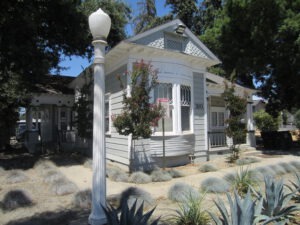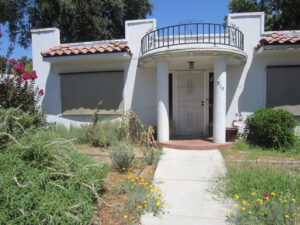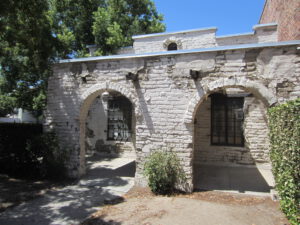Demolition last year of Visalia’s first apartment building, the Odell-Mor, kicked off efforts to change the city’s municipal code so Visalia won’t lose even more parts of its history.
The Visalia City Council directed the Historic Preservation Advisory Committee to revise the Historic Preservation District Ordinance to protect historic structures and sites from future destruction and blight.

The committee completed its review of the ordinance in May of this year, and presented their recommendations to the Visalia Planning Commission on July 11.
Historic structures are given one of three classifications; Exceptional, Focus, or Background. Neither the committee nor the Visalia City Council were previously able to deny a demolition permit of buildings classified Background.
The new ordinance gives the committee authority to stop the demolition of any building in Visalia’s Historic District or listed on Visalia’s Local Registry regardless of its classification. In addition, the new ordinance removes the exemption that Local Register structures located outside the Historic District and classified as “Background” cannot be reviewed by the committee when the owner wants to make alterations.

Removal of this exemption allows the committee to review requested exterior alterations for any property that is within the Historic District or on the Local Register.
This change would affect 36 properties with a Background classification.
The planning commission voted 4-0, with Commissioner Adam Peck recusing himself, to change the code.
First comprehensive review of register since 2013
Besides an update to the ordinance, the city requested that the committee perform a comprehensive review of all the buildings on the register.
The Local Register update was needed to ensure that historic buildings, particularly those located outside the bounds of the Historic District, were assigned an appropriate classification to protect them from alterations or demolition.
The committee and community volunteers visited all 368 properties on the Local Register early in 2021 and conducted surveys of each site. Surveys involved photographing each Local Register structure, documenting existing conditions, cross-referencing observations with previous surveys, and noting any physical changes, and occasionally speaking to property owners and members of the public.
There are 678 properties located in the Historic District and 368 properties listed on the Local Register that may or may not be inside the historic district.

As a result of their review, the Local Register of Historic Structures Update recommended the reclassification of 82 properties and removal of 18 properties currently listed on the Local Register.
A total of 32 properties were recommended by the committee to be upgraded to Exceptional.
Of those sites, 27 of were upgraded from a Focus classification. But five were recognized for their historical significance and were upgraded from Background.
Examples of those upgraded from “Focus” to “Exceptional” include the St. Mary’s Catholic Church Doherty Center building located at 520 N. Church Street (a former convent) and the Crotty Mansion at 617 N. Encina Street.
A total of 41 properties were recommended by the committee to be changed from their existing classifications to “Focus”. Of these, 40 properties are recommended to be upgraded from “Background” to “Focus”.
One property on on W. Myrtle Avenue, was actually downgraded because the owner had altered the façade with aluminum siding.
Of the 18 properties recommended for removal from any historical list, 15 were because the original historic structure is no longer located on the property due to demolition, destruction due to fire, or relocation to a different site.
The remaining three properties on the list are proposed for removal due to either a lack of architecturally significant features, or the substantial loss of significant features due to alterations conducted over time.
The committee recommended that the advisory group revisit the historical list once every five years.
